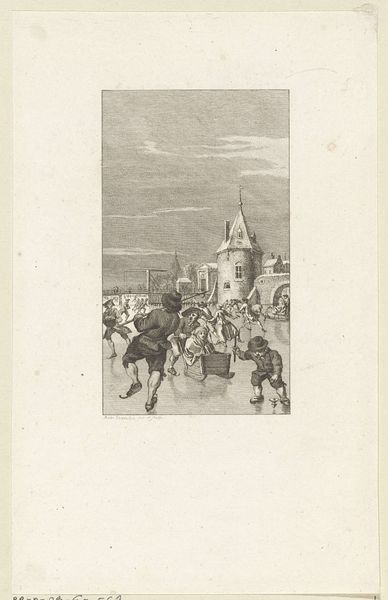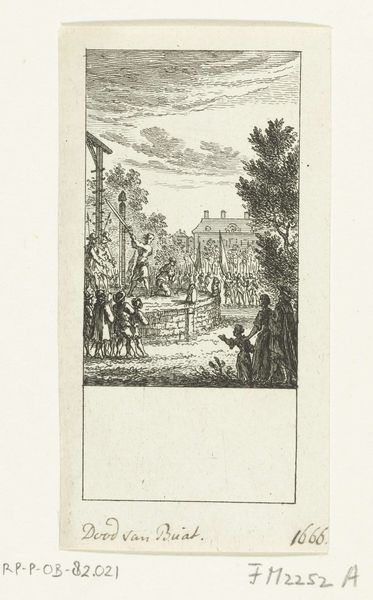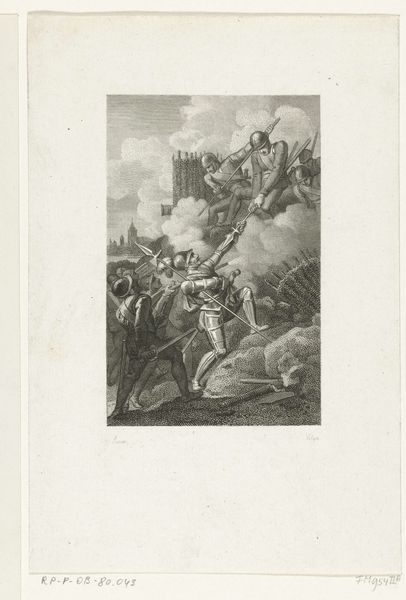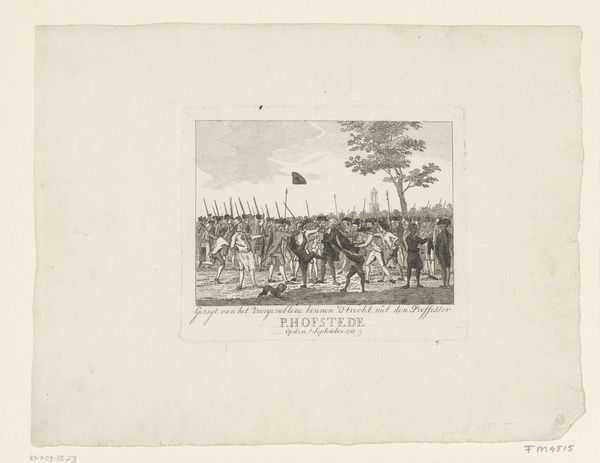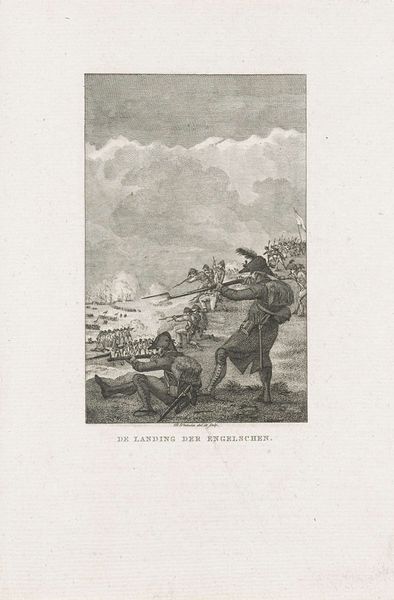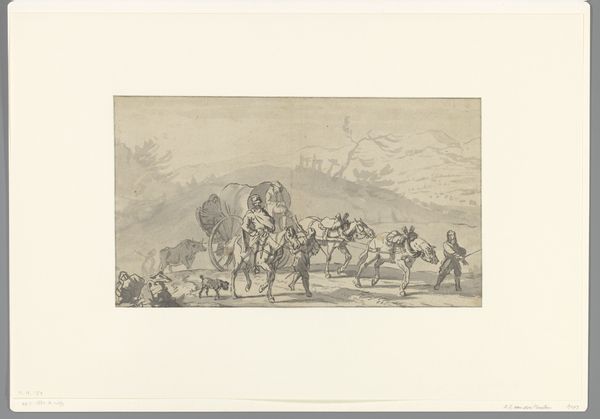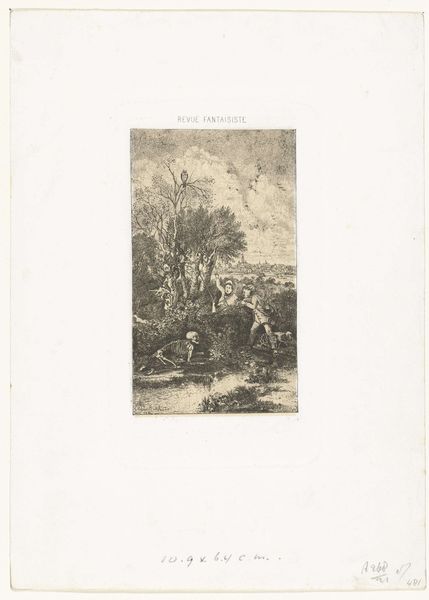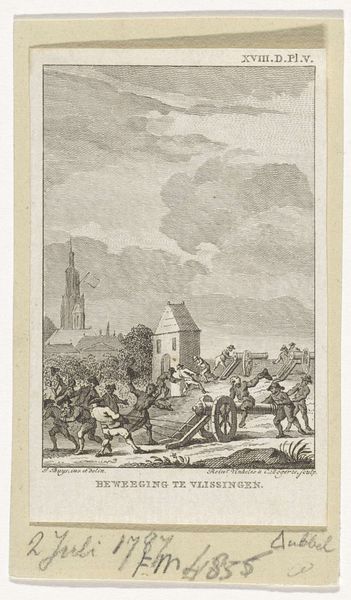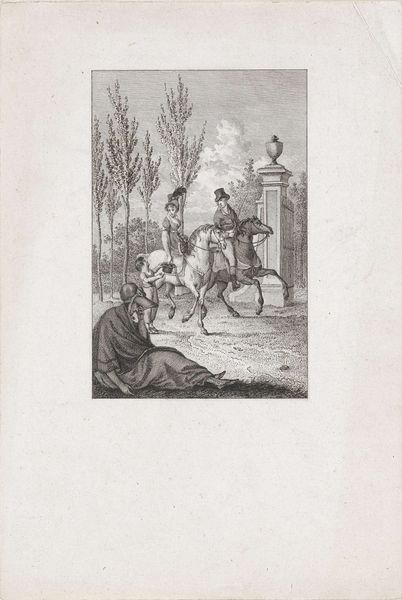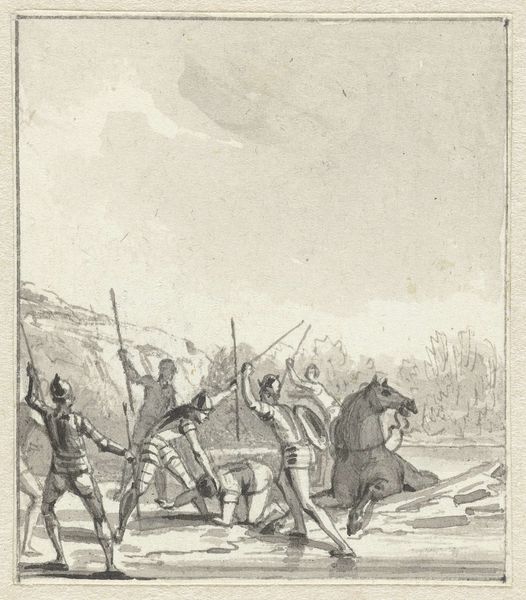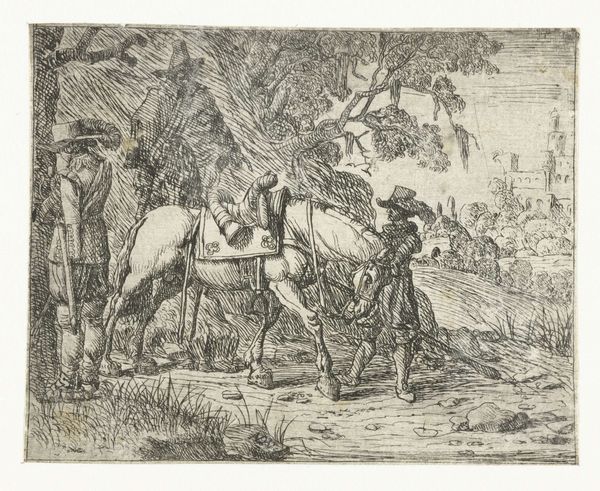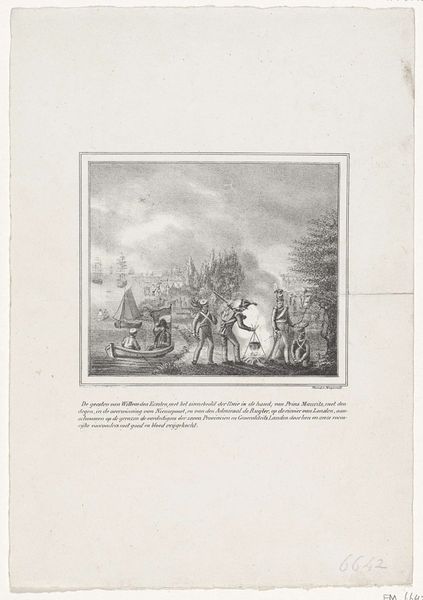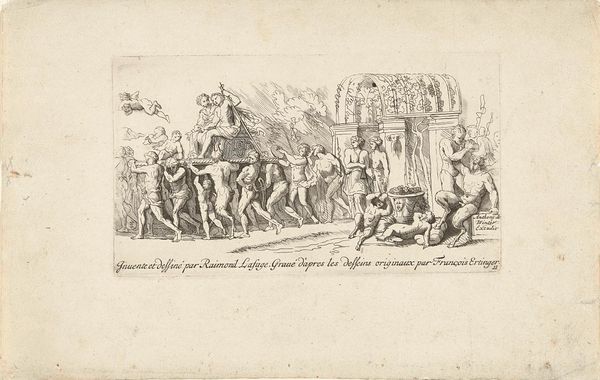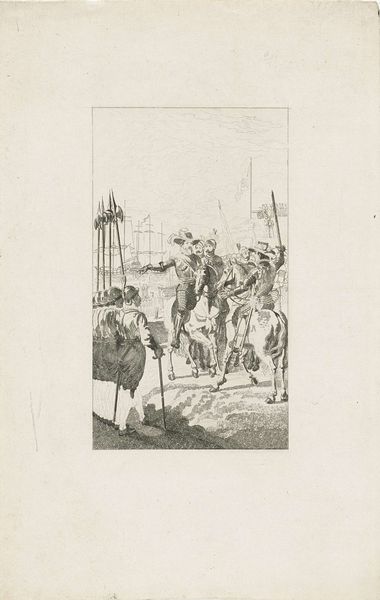
drawing, print, engraving
#
drawing
# print
#
landscape
#
romanticism
#
genre-painting
#
history-painting
#
engraving
Dimensions: height 238 mm, width 157 mm
Copyright: Rijks Museum: Open Domain
This print was made by Reinier Vinkeles, likely at the end of the 18th century. It is printed on paper with an engraving technique. The image shows enslaved people working on a sugar plantation, pushing a cart laden with sugar cane. The material reality of this print, made with ink and a painstaking process of incision, stands in stark contrast to the brutal reality of sugar production. The labor-intensive process of sugar cultivation is obscured by the final product, a sweet commodity consumed far away. The print itself is a product of a different kind of labor, the skilled hand of the engraver. It speaks to the complex relationship between artistic representation and the social realities of labor and exploitation. While seemingly distant from the scene it depicts, the print is inextricably linked to the systems of power and consumption that sustained the sugar trade. By considering the materials and processes involved in its creation, we can begin to unpack the complex layers of meaning embedded within this image.
Comments
No comments
Be the first to comment and join the conversation on the ultimate creative platform.
